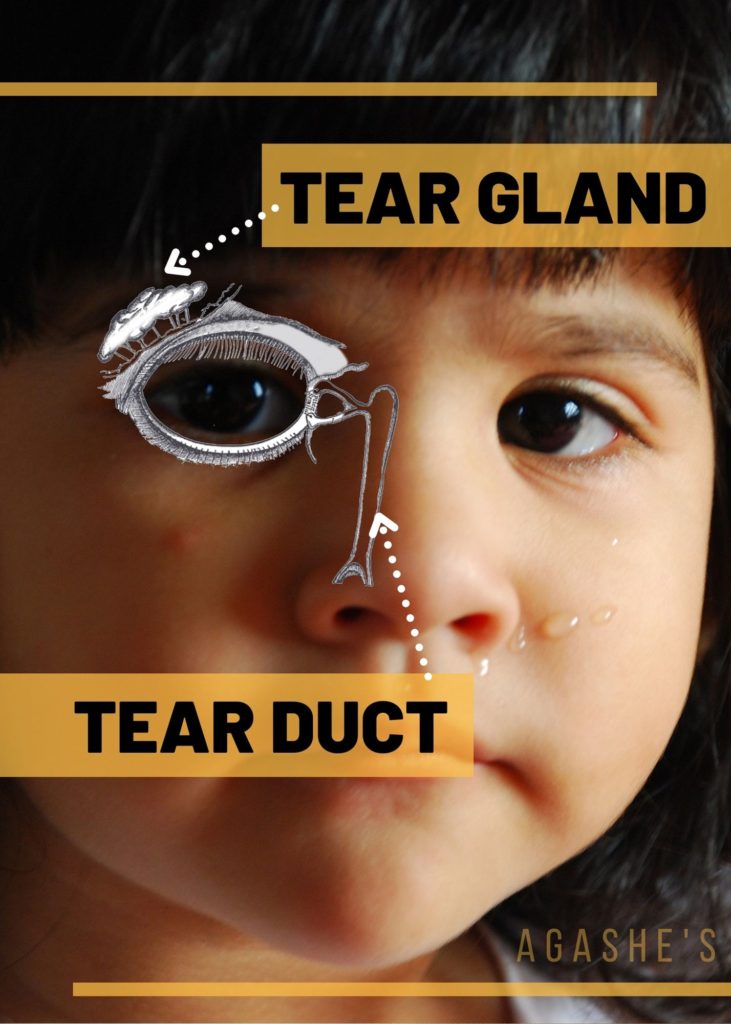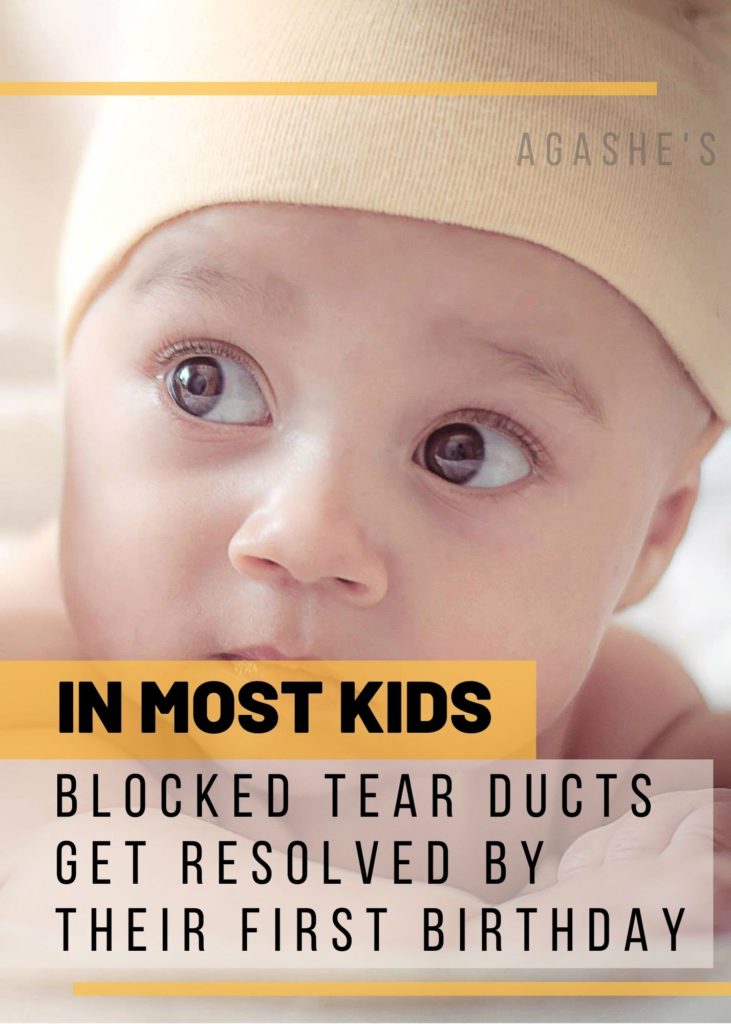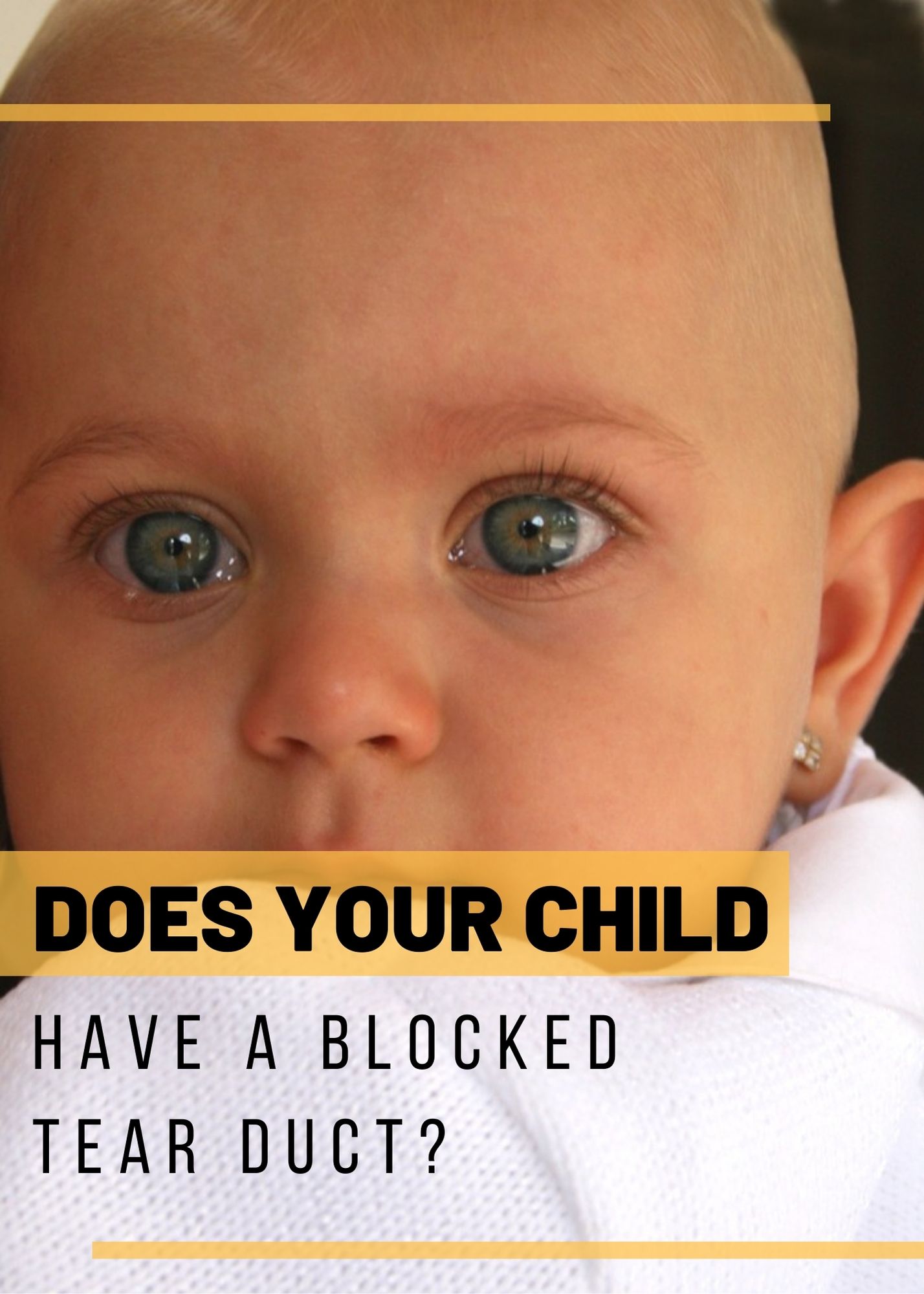“Mamma, I cry when I get hurt. You cry even when you are happy. But why is Babu crying even when she is playing?” Yogita’s sharp five year old pointed out. It didn’t make sense to Yogita too and she admitted, “Even I don’t know why! We’ll have to ask Doctor Aunty when we visit her next.” The eye doctor explained to her that it was because of a blocked tear duct.
Tears and Tear Ducts
We all know that kids cry as an expression of emotions – from ‘Ma, I’m hungry’ to ‘My tummy is hurting’ to ‘That kid pushed me’. Did you know that tears also serve two other purposes? Tears help in washing out any irritant (dust, smoke, chemicals) that could get into your kid’s eye. They also have certain enzymes and antibodies which help protect against germs. They also help to keep your kid’s eyes moist and lubricated.

Tear producing glands are found in the eyelids and at the edge of your kid’s eye socket and under the brow bone. The eyelids help move the tears across the eyes much like the wipers of your car’s windshields. These are then drained out through two small openings on the eyelids. From these openings, the tears enter the tear sac at the inner corner of the eye. From here, the tears are drained out into the nose through a tear duct (called nasolacrimal duct). This is the reason why we have a runny nose when we cry.
Blocked Tear Duct Causes
Sometimes this tear duct can get blocked in kids. About one third of kids are estimated to be born with blocked tear ducts. But fortunately, in most of these children, symptoms often go away within the first year of their life. In others, the duct may get blocked due to infection or injury. Some kids have nasal polyps or cysts that may block the duct, but these are very rare causes of blocked tear ducts.
Symptoms of Blocked Tear Duct
Blocked tear ducts may not be easily noticed at birth because babies start producing more tears only after the first few weeks. Symptoms may become more obvious only when your baby cries or in cold or windy weather. It may be seen in one or both your child’s eyes.
- Kids with blocked tear ducts often have extra – moist eyes. Your kid may also have tears flowing down his/ her cheeks even when s/he is not crying. However, the other way around is not always true – extra tears do not always mean a blocked tear duct. There could be other reasons too.
- If your kid has a blocked tear duct, his or her eyes may appear crusted with slightly sticky discharge. This is because of the mucus which normally stays dissolved in the tears comes back into the eye when it can’t be drained into the nose.
- You may also find that your kid tends to develop red eyes quite frequently. This is due to repeated infections when the protective function of the tears is not up to the mark because they do not drain properly.
- Sometimes, the problem becomes apparent after the tear sac becomes infected. In that case, you may notice redness at the inner corner of your kid’s eye and a tiny bump at the side of his / her nose.
Seek an Eye Doctor’s Appointment
If you suspect that your child’s tear duct may be blocked, do not panic. A blocked tear duct is rarely an emergency. It would be a good idea to visit your Child eye doctor if:
- Your kid is more than twelve months old and continues to have watery eyes.
- Your child’s eyelid is swollen or red or has a red bump at the inner corner
- You notice pus in your child’s eyes.

If you too think that your child may have a blocked tear duct, do not hesitate to drop in for a visit. Dr. Prachi Agashe, Child eye doctor will examine your child and help you understand if it’s something that needs to be ignored, kept a watch on or treated. You can contact Dr. Prachi Agashe (DNB Ophthalmology, Fellow Pediatric Ophthalmology) at Agashe Hospital in Kurla or write to her at contactus@agashehospital.com or call at 9867539883 / 7304989552.
Expert Moderator: Dr. Prachi Agashe | Blog Author: Dr. Amrita Sodhi








